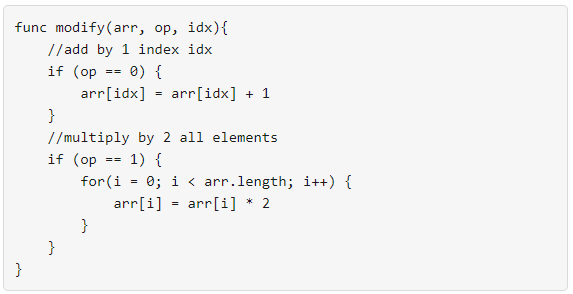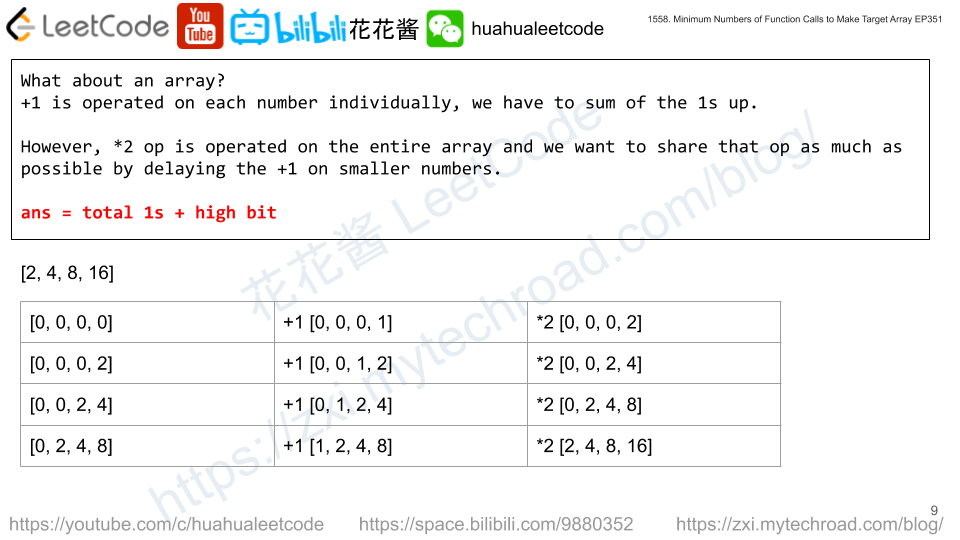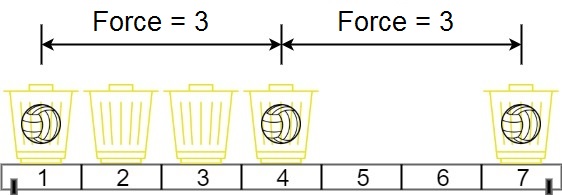There are 3n piles of coins of varying size, you and your friends will take piles of coins as follows:
- In each step, you will choose any 3 piles of coins (not necessarily consecutive).
- Of your choice, Alice will pick the pile with the maximum number of coins.
- You will pick the next pile with maximum number of coins.
- Your friend Bob will pick the last pile.
- Repeat until there are no more piles of coins.
Given an array of integers piles where piles[i] is the number of coins in the ith pile.
Return the maximum number of coins which you can have.
Example 1:
Input: piles = [2,4,1,2,7,8] Output: 9 Explanation: Choose the triplet (2, 7, 8), Alice Pick the pile with 8 coins, you the pile with 7 coins and Bob the last one. Choose the triplet (1, 2, 4), Alice Pick the pile with 4 coins, you the pile with 2 coins and Bob the last one. The maximum number of coins which you can have are: 7 + 2 = 9. On the other hand if we choose this arrangement (1, 2, 8), (2, 4, 7) you only get 2 + 4 = 6 coins which is not optimal.
Example 2:
Input: piles = [2,4,5] Output: 4
Example 3:
Input: piles = [9,8,7,6,5,1,2,3,4] Output: 18
Constraints:
3 <= piles.length <= 10^5piles.length % 3 == 01 <= piles[i] <= 10^4
Solution: Greedy
Always take the second largest element of a in the sorted array.
[1, 2, 3, 4, 5, 6, 7, 8, 9]
tuples: (1, 8, 9), (2, 6, 7), (3, 4, 5)
Alice: 9, 7, 5
You: 8, 6, 4
Bob: 1, 2, 3
Time complexity: O(nlogn) -> O(n + k)
Space complexity: O(1)
C++
|
1 2 3 4 5 6 7 8 9 10 11 |
class Solution { public: int maxCoins(vector<int>& piles) { const int n = piles.size() / 3; sort(begin(piles), end(piles)); int ans = 0; for (int i = 0; i < n; ++i) ans += piles[n * 3 - 2 - i * 2]; return ans; } }; |
C++ counting sort
|
1 2 3 4 5 6 7 8 9 10 11 12 13 14 15 16 |
class Solution { public: int maxCoins(vector<int>& piles) { constexpr int kMax = 10000; const int n = piles.size() / 3; vector<int> counts(kMax + 1); for (int v : piles) ++counts[v]; int idx = 0; for (int i = 1; i <= kMax; ++i) while (counts[i]--) piles[idx++] = i; int ans = 0; for (int i = 0; i < n; ++i) ans += piles[n * 3 - 2 - i * 2]; return ans; } }; |





